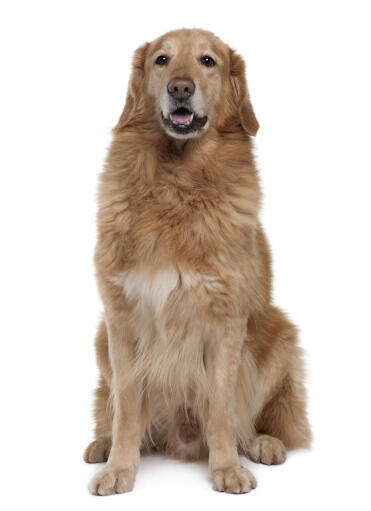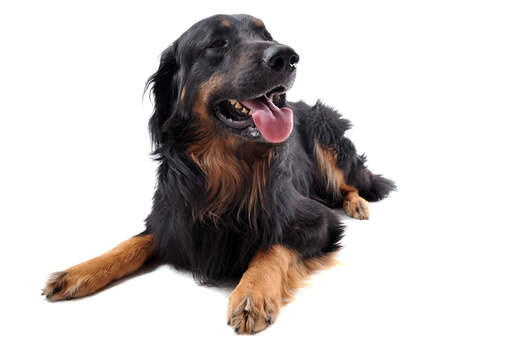Hovawart hund









History
The Hovawart, sometimes nick named the 'Hovie', originates from the Black Forest area of Germany and dates back to medieval times. It was used as a guard dog on large estates, to watch over sheep and as a general working dog. With the introduction of the German Shepherd Dog, interest in the Hovie declined and it faced extinction. However, due to the efforts of Kurt Friedrich Koenig, breeding started up again and by 1922, the first Hovawart litter was entered into the German Breeding Directory.
As was often the case, the Second World War saw the breed used for military purposes and it was nearly wiped out again. Today, the Hovawart is mainly kept as a pet, but some dogs still work and many are used by search and rescue organisations.
Behaviour
The Hovie is a loyal and affectionate dog who is best suited to living with people, rather than kennels. They like to know you are close by, but won't always be under your feet like some breeds. They are good within the family and fine with children if raised with them. They can be reserved with strangers but are rarely aggressive towards them unless provoked. They are brave and protective, but will be okay with strangers if you say everything is alright.
If socialised form a young age, the Hovawart is usually good with all other pets and other dogs, although un-neutered males can sometimes try and dominate other dogs.
Hovies are an intelligent breed that need consistent training. Their faithfulness to their owner makes teaching quite straight forward, but they do need a firm, loving hand in order to get the best out of them. Positive reinforcement and praise will do much for their confidence and produce the best results. They do become bored easily with repetition and dislike/withdraw with harsh words or actions. Hovies have a keen nose for tracking and can be trained to a high degree. Any form of competition such as agility, tracking, herding or search and rescue are all possible and thoroughly stimulate the dog.
Hovawarts are an active breed and as such, require a fair amount of daily exercise. They make good jogging partners but are happiest when allowed to run free. Recall is rarely a problem with Hovies as they are usually obedient but they love to run, jump and explore; although rarely do they wander too far. If you like long weekend walks then the Hovawart is perfect for you as they enjoy walking over rough terrain, exploring along side you.
Given sufficient exercise, the Hovie is calm and content within the house.
Their coat needs brushing a couple of times a week to remove dead hair, but is quite low maintenance. More brushing is needed when they are moulting.
Hovies are hardy dogs, bred to cope with most weather conditions, although they prefer a cooler climate and will seek somewhere cool to sleep if they get too hot. Hip dysplasia is sometimes seen and an under active thyroid seems to be more common in the breed.
Temperament
Hovawarts have a clam and obedient temperament. They make good family dogs who will form a tight bond with their family members. They get on well with children and are tolerant of other household pets. These are very intelligent dogs who will thrive on training/mental stimulation but they do need a lot of exercise in order to be settled at home.
They can be disinterested in strangers but make good watchdogs.
Health Problems
Health problems that may affect Hovawarts include canine hip dysplasia (CHD) and thyroid problems.
Breed Details
- Status: Common
- Life Expectancy: 11 -14 years
- Weight: 30 - 50 kg
- Højde: 23 - 28"
- Rare: Nej
- Coat: Medium - Double
- Grooming Requirements: More than once per week
- Town or Country: Either
- Minimum Home Size: Large House
- Minimum Garden Size: Large Garden
- Breed Type: Working Dog
- Størrelse: Stor
- Energy Level: Høj
- Exercise Required: Over 2 hours
Billeder af Hovawart














